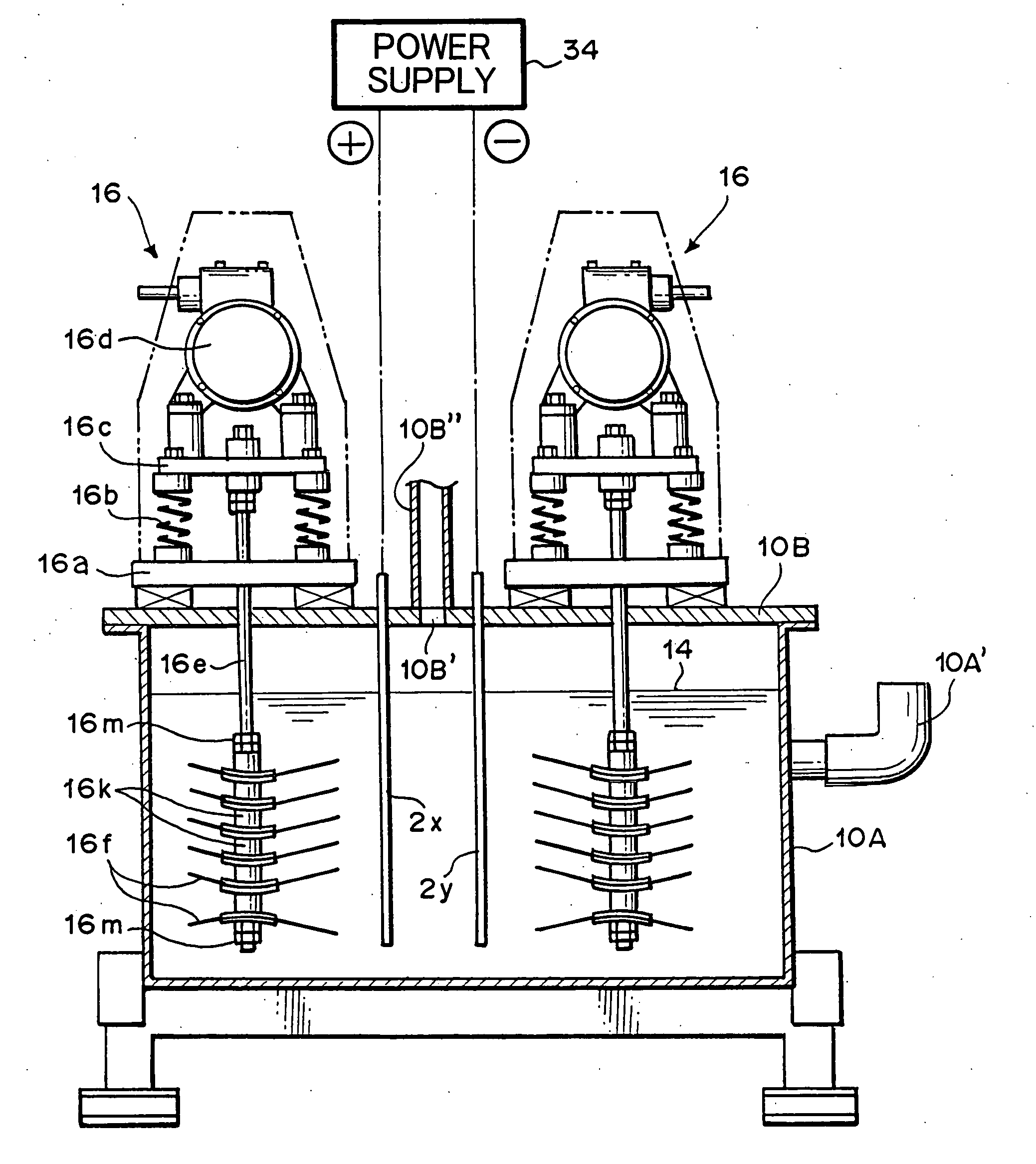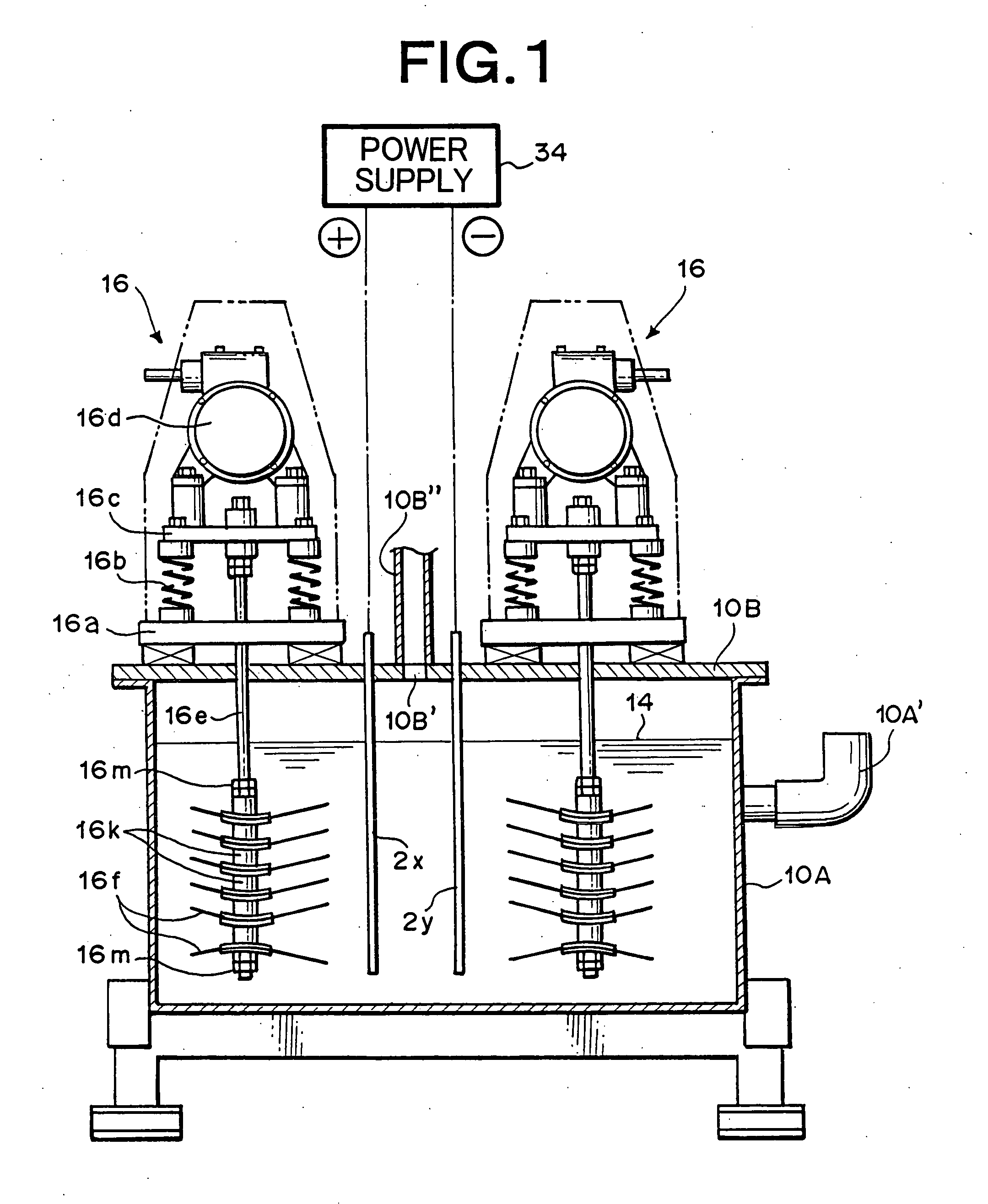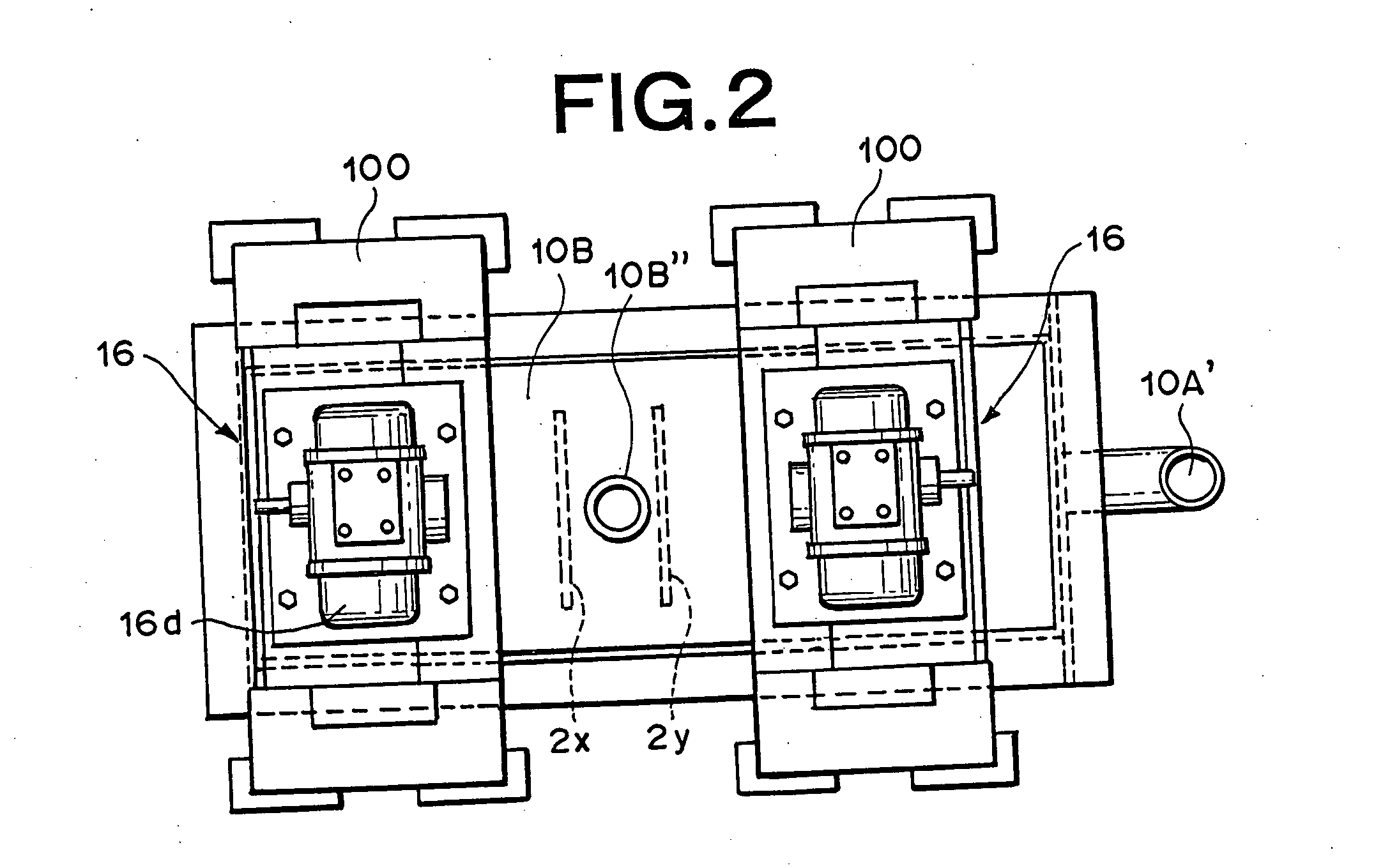Hydrogen-oxygen gas generator and hydrogen-oxygen gas generating method using the generator
a hydrogen gas and generator technology, applied in electrolysis, refrigeration machines, refrigeration components, etc., can solve the problems of limited efficiency of apparatus and methods of the related art, possible distance between adjacent electrodes, and inability to achieve the effect of generating hydrogen gas and oxygen gas for industrial use, and achieve satisfactory uniformity, high efficiency, and high efficiency
- Summary
- Abstract
- Description
- Claims
- Application Information
AI Technical Summary
Benefits of technology
Problems solved by technology
Method used
Image
Examples
first embodiment
Utilizing the device as described in FIG. 40 and FIG. 41, hydrogen-oxygen gas was generated and collected under the following conditions.
Electrolytic cell: Manufactured from (SUS304) stainless steel (2 mm thick inner surface of heat-resistant polyvinyl plastic) 740 mm×2100 mm×700 mm (H)
Lid member: Manufactured from (SUS304) stainless steel, insulated vibration stirring means employs the sealed structure of FIG. 4 and FIG. 5.
Insulated vibration stirring means: Vibration motor; Uses inverter manufactured by Murakami Seiki Seisakusho (Corp.) (product name), 400W×3-phase×200 V, 6 unit operating at 40 Hz. Vibrating blades: Manufactured from titanium, 6 blades Affixed with the polyethylene tape as shown in FIG. 34. Interelectrode gap: A gap of 20 millimeters was set among adjacent electrode support blades of both of the insulated vibration stirring means. Electrolytic fluid: KOH added as electrolytic material at 8 percent by weight to distilled water, temperature 55° C., V...
second embodiment
Utilizing the device as described in FIG. 37 through FIG. 39, hydrogen-oxygen gas was generated and collected under the following conditions.
Electrolytic cell: Manufactured from (SUS304) stainless steel (inner surface of heat-resistant polyvinyl plastic sheath plastizol finishing) 400 mm×700 mm×550 mm(H)
Lid member: Manufactured from (SUS304) stainless steel, insulated vibration stirring means employs the sealed structure of FIG. 4 and FIG. 5.
Insulated vibration stirring means: Vibration motor; Uses inverter manufactured by Murakami Seiki Seisakusho (Corp.) (product name), 150 W×3-phase×200 V, 2-axis type, 2 units with inverter operated at 40 Hz. Vibrating blades: Manufactured from titanium, 6 blades. Dimension D2 of FIG. 33 is 55 millimeters. Electrode support blades: Manufactured from titanium, 2 blades (Used only on highest section and lowest section.) Dimension D2 of FIG. 33 is 150 millimeters. Anode member & cathode member: Titanium lath mesh electrode of FIG. 54....
third embodiment
Utilizing the device as described in FIG. 24 through FIG. 26, hydrogen-oxygen gas was generated and collected under the following conditions.
Electrolytic cell: Manufactured from stainless steel (2 mm thick inner surface of heat-resistant polyvinyl plastic) 740 mm×2100 mm×700 mm (H)
Lid member: Manufactured from (SUS304) stainless steel, insulated vibration stirring means employs the sealed structure of FIG. 4 and FIG. 5.
Insulated vibration stirring means: Vibration motor; Uses inverter manufactured by Murakami Seiki Seisakusho (Corp.) (product name), 400 W×3-phase×200 V, 6 units operating at 40 Hz. Vibrating blades: Manufactured from titanium (usable for both anode member or cathode member), 6 blades Anode member & cathode member: Cylindrical titanium mesh case of FIG. 53 with overlapping electrodes Electrolytic fluid: KOH added as electrolytic material at 25 percent by weight to distilled water, temperature 55° C., Voltage applied across cathode and anode: 1.4 volts (...
PUM
| Property | Measurement | Unit |
|---|---|---|
| frequency | aaaaa | aaaaa |
| temperature | aaaaa | aaaaa |
| distance | aaaaa | aaaaa |
Abstract
Description
Claims
Application Information
 Login to View More
Login to View More - R&D
- Intellectual Property
- Life Sciences
- Materials
- Tech Scout
- Unparalleled Data Quality
- Higher Quality Content
- 60% Fewer Hallucinations
Browse by: Latest US Patents, China's latest patents, Technical Efficacy Thesaurus, Application Domain, Technology Topic, Popular Technical Reports.
© 2025 PatSnap. All rights reserved.Legal|Privacy policy|Modern Slavery Act Transparency Statement|Sitemap|About US| Contact US: help@patsnap.com



